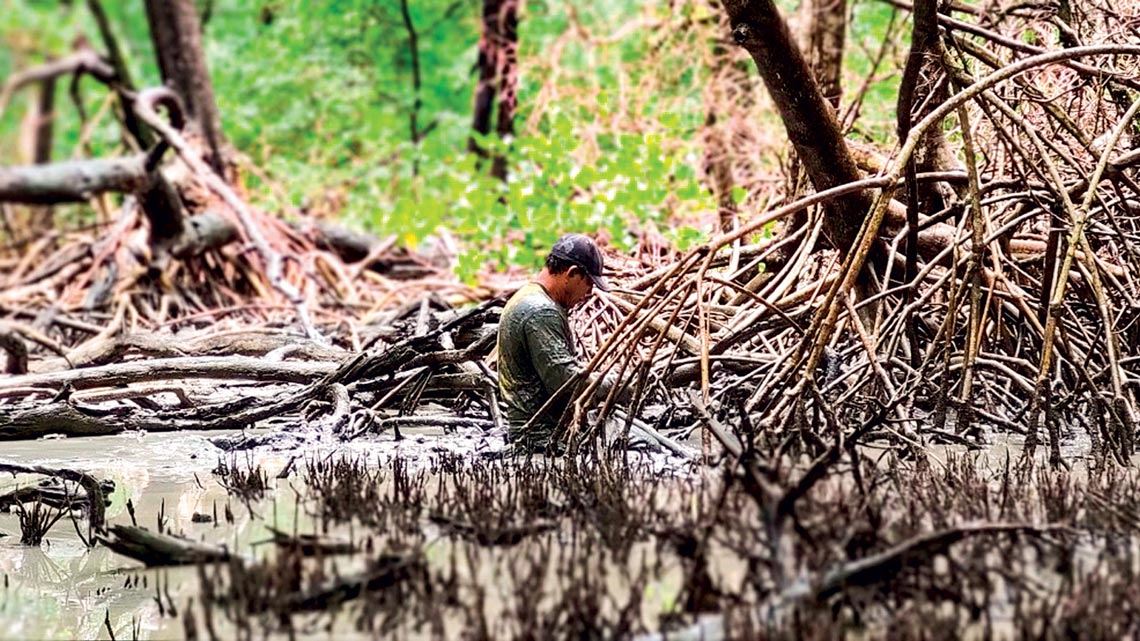Although the Amazon is known as a rainforest, it is also home to the largest mangrove in the world. More than 50 riparian and coastal communities in Bragança, located about 200 kilometers east of Belém, the state capital of Pará, rely on the resources of the Caeté-Taperaçu Marine Extractive Reserve through fishing, crabbing (as shown in the photo above), burning wood to make charcoal, and other forms of sustenance. As part of the Mangues da Amazônia (Amazonian Mangroves) project, Peruvian environmental engineer Indira Eyzaguirre interviews locals to help her diagnose the current state of the mangrove and propose conservation models.
Image submitted by Indira Eyzaguirre, a PhD student at the Mangrove Ecology Laboratory (LAMA) of the Federal University of Pará (UFPA)
Republish